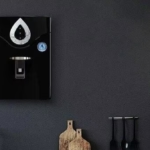Modems vs Routers: Why You Need Both
In today’s digital age, a fast and reliable internet connection is essential for work, entertainment, and communication. Yet, many people often get confused between two critical components of home networking: modems and routers. Although these devices work together to deliver internet connectivity, they serve distinct functions. In this detailed blog post, we’ll break down the differences between modems and routers, explain how they work individually and together, and help you understand why having both is crucial for a seamless online experience.
Understanding the Basics
What Is a Modem?
A modem (short for modulator-demodulator) is the gateway that connects your home network to your Internet Service Provider (ISP). Its primary role is to convert the analog signals coming from your ISP (via cable, DSL, or fiber) into digital signals that your devices can understand, and vice versa. Here are some key points:
- Functionality:
- Signal Conversion: Converts analog signals to digital data and digital data back to analog signals for transmission over telephone or cable lines.
- ISP Connection: Acts as the bridge between your home network and the wide world of the internet.
- Types of Modems:
- Cable Modems: Commonly used in homes with cable internet.
- DSL Modems: Used for digital subscriber line connections.
- Fiber Modems (ONTs): Optical Network Terminals are used for fiber optic connections.
- Key Considerations:
- Compatibility: Ensure your modem is compatible with your ISP and supports the speeds you are paying for.
- Speed and Standards: Modern modems support standards like DOCSIS 3.0/3.1 for cable connections, which determine the speed and reliability of your connection.
What Is a Router?
A router is the device that distributes the digital internet signal from the modem to multiple devices within your home network. It creates a local network, either wired, wireless, or both, and directs data traffic between devices. Here’s what you need to know about routers:
- Functionality:
- Network Management: Routes data packets between devices and manages network traffic.
- Wireless Connectivity: Often includes Wi-Fi capabilities, allowing multiple devices to connect wirelessly.
- Types of Routers:
- Wireless Routers: Provide Wi-Fi connectivity along with wired ports.
- Wired Routers: Primarily used in enterprise settings where devices connect via Ethernet cables.
- Mesh Routers: Consist of multiple nodes to provide better coverage over a larger area.
- Key Considerations:
- Speed and Bandwidth: Look for routers that support the latest Wi-Fi standards (e.g., Wi-Fi 5, Wi-Fi 6) for faster speeds and better performance in crowded networks.
- Security Features: Modern routers come with built-in firewalls, VPN support, and advanced security protocols to protect your network from cyber threats.
How Modems and Routers Work Together
While modems and routers perform different functions, they complement each other to provide complete internet connectivity:
-
Modem’s Role:
- The modem connects to your ISP’s network and converts the incoming signal into a format that your devices can use.
-
Router’s Role:
- The router takes the digital signal from the modem and distributes it to various devices—computers, smartphones, smart TVs, and more—either via Ethernet cables or Wi-Fi.
-
Combined Functionality:
- Without a modem, your router wouldn’t have a source for the internet connection. Conversely, without a router, the modem would only provide internet access to a single device via a direct connection. Together, they enable multiple devices to share a single internet connection efficiently.
Why Do You Need Both?
Understanding why you need both a modem and a router is key to setting up a reliable home network:
- Comprehensive Connectivity:
- A modem is necessary for connecting to the internet, while a router distributes that connection to all your devices, ensuring that your home network is both accessible and manageable.
- Enhanced Security:
- Routers offer additional security features, such as firewalls and encryption, that help protect your network from external threats—something a modem alone does not provide.
- Scalability and Flexibility:
- Routers allow you to expand your network to multiple devices and even across multiple rooms or floors using mesh systems or additional access points.
- Optimized Performance:
- Using a modem-router combo or separate devices optimized for their roles can result in better overall performance, ensuring that your internet speed and reliability are maximized.
Choosing the Right Equipment
When it comes to selecting a modem and router, consider the following factors:
For Modems:
- Compatibility with Your ISP:
- Verify that the modem supports the specific technology (cable, DSL, fiber) offered by your ISP.
- Speed Requirements:
- Choose a modem that can handle your subscribed internet speed. For instance, if you have a high-speed plan, opt for a modem that supports DOCSIS 3.1 (for cable internet) to avoid bottlenecks.
- Reliability and Reviews:
- Look for models with positive reviews regarding uptime and durability.
For Routers:
- Wi-Fi Standards:
- Invest in a router that supports the latest Wi-Fi standards (such as Wi-Fi 6) for better performance and future-proofing.
- Coverage Area:
- Consider the size of your home and look for routers that offer sufficient coverage, possibly through mesh networking if you have a large or multi-story home.
- Security Features:
- Ensure the router offers robust security protocols, regular firmware updates, and features like guest networking to keep your primary network secure.
- Ease of Use and Management:
- Look for routers with user-friendly interfaces and management apps that make it easy to monitor and control your network.
Installation and Setup
Setting Up Your Modem and Router:
- Step 1: Connect the Modem:
- Plug in the modem to your ISP’s cable or phone line and power it up.
- Step 2: Connect the Router to the Modem:
- Use an Ethernet cable to connect the router’s WAN port to the modem. This step bridges your local network with the external internet.
- Step 3: Configure Your Router:
- Access the router’s admin panel via a web browser or mobile app to set up Wi-Fi networks, change default passwords, and configure security settings.
- Step 4: Connect Your Devices:
- Once the network is configured, connect your devices to the router either via Wi-Fi or Ethernet cables.
Troubleshooting Common Issues:
- Connectivity Problems:
- Check cables, restart both devices, and ensure the modem is correctly activated by your ISP.
- Security Concerns:
- Regularly update firmware and review connected devices to ensure no unauthorized access.
- Performance Optimization:
- Adjust router settings, reposition for better signal strength, and consider additional access points if necessary.
Conclusion
Modems and routers are both essential components of a modern home network. The modem provides the critical connection to your ISP, converting signals so your digital devices can communicate, while the router distributes that connection to create a secure and efficient local network. Understanding the differences between these devices—and knowing why you need both—is key to optimizing your internet performance and protecting your online activities.
Whether you’re setting up a new network or upgrading your existing one, selecting the right modem and router based on compatibility, performance, and security will ensure that you enjoy fast, reliable, and secure internet access for all your devices.




Leave a Reply
Want to join the discussion?Feel free to contribute!